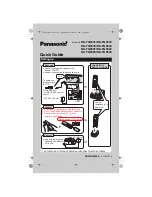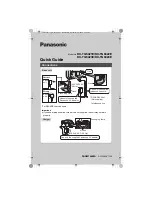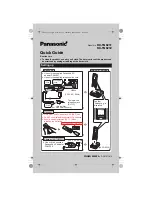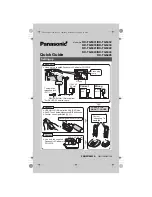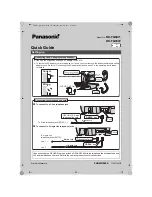
4
English
b)
Check the operation of the lower guard spring. If the
guard and the spring are not operating properly, they
must be serviced before use.
Lower guard may operate
sluggishly due to damaged parts, gummy deposits, or a build-
up of debris.
c)
Lower guard should be retracted manually only for
special cuts such as “plunge cuts” and “compound cuts.”
Raise lower guard by retracting handle and as soon
as blade enters the material, the lower guard must be
released.
For all other sawing, the lower guard should operate
automatically.
d)
Always observe that the lower guard is covering the
blade before placing saw down on bench or floor.
An
unprotected, coasting blade will cause the saw to walk
backwards, cutting whatever is in its path. Be aware of the time
it takes for the blade to stop after switch is released.
Additional Specifi c Safety Instructions for
Circular Saws
WARNING: Do not use abrasive wheels or blades.
WARNING: Do not use water feed attachments.
•
Use clamps or another practical way to secure and support
the workpiece to a stable platform.
Holding the work by hand
or against your body leaves it unstable and may lead to loss of
control.
• Keep your body positioned to either side of the blade, but
not in line with the saw blade.
KICKBACK could cause the saw
to jump backwards (see
Causes and Operator Prevention of
Kickback
and
KICKBACK
).
•
Air vents often cover moving parts and should be avoided.
Loose clothes, jewelry or long hair can be caught in moving parts.
b)
When blade is binding, or when interrupting a cut for any
reason, release the trigger and hold the saw motionless
in the material until the blade comes to a complete
stop. Never attempt to remove the saw from the work
or pull the saw backward while the blade is in motion or
kickback may occur.
Investigate and take corrective actions
to eliminate the cause of blade binding.
c)
When restarting a saw in the workpiece, center the
saw blade in the kerf and check that saw teeth are not
engaged into the material.
If saw blade is binding, it may
walk up or kickback from the workpiece as the saw is restarted.
d)
Support large panels to minimize the risk of blade
pinching and kickback.
Large panels tend to sag under their
own weight. Supports must be placed under the panel on both
sides, near the line of cut and near the edge of the panel.
e)
Do not use dull or damaged blades.
Unsharpened or
improperly set blades produce narrow kerf causing excessive
friction, blade binding and kickback.
f)
Blade depth and bevel adjusting locking levers must be
tight and secure before making cut.
If blade adjustment
shifts while cutting, it may cause binding and kickback.
g)
Use extra caution when making a “plunge cut” into
existing walls or other blind areas.
The protruding blade
may cut objects that can cause kickback.
LOWER GUARD SAFETY INSTRUCTIONS
a)
Check lower guard for proper closing before each use. Do
not operate the saw if lower guard does not move freely
and close instantly. Never clamp or tie the lower guard
into the open position.
If saw is accidentally dropped, lower
guard may be bent. Raise the lower guard with the retracting
handle and make sure it moves freely and does not touch the
blade or any other part, in all angles and depths of cut.




















